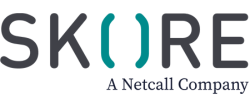Over allocation of resources
Have you allocated too many resources to the job or have you allocated to many jobs to the resource? Both of these situations are painfully common when implementing a change program. Sadly this results in a miss of either cost saving, when there are too many resources, or efficiency/quality benefits when there are not enough. Some of the most common benefits cited in change programs.
In our experience a key reason for this is due to the design approach taken early on in the program. Typically we start defining the organization structure, the roles and reporting lines either before, or in parallel, with the process design. It may seem logical to do this when you want to define who does what in the process. However it is this approach that causes problems of over allocation and a focus on silos over integration of efforts.
The problem with this approach is that you define roles based on limited knowledge of what the organization actually needs to do. You know it will be doing some marketing, so you add some marketing resource. How do you know what roles to add? Well in another company there was a Marketing Director, three Marketing Managers, a Creative Designer, a Copywriter and an Administrative Assistant. Now you can go start hiring these roles while the design team define the processes. Except how do you really know what sort of person you need and how many of them?
OPM, a model for success
The Organizational Performance Model (OPM) follows the reverse of this approach. Once the ambition and objectives have been defined for the organization the focus of the design team is purely on the work required to achieve those objectives. At this stage the roles required to execute the work are ignored and work is designed in a hypothetical ideal environment.
The benefit of this is that the team is free to design the ideal process to achieve the objectives. So when they do allocate resources they can evaluate to what extent it is even possible to reach those objectives. As opposed to designing a new process based on existing resources which may or may not have any chance of actually achieving the objectives.
A further benefit is that resource allocation is much more efficient. Now you are designing roles to fit the work rather than the other way round. So ultimately you will be assigning people to these roles based on the work required to reach the objective rather than general skills in a given area such as ‘Marketing’. The follow through is that job descriptions and job postings are directly related to the performance of the organization and not some industry standard. Meaning clearer recruiting guidelines and better fitting candidates.
While implementing designs throw up unexpected challenges, that often have an impact on resource allocation, our experience over the past three years has repeatedly demonstrated to us that this approach is both more efficient in application and has higher rates of success in realizing the projected benefits of the program.
If you would like to know more about OPM and how we use it please do get in touch. Reply below or email us info@getskore.com.
